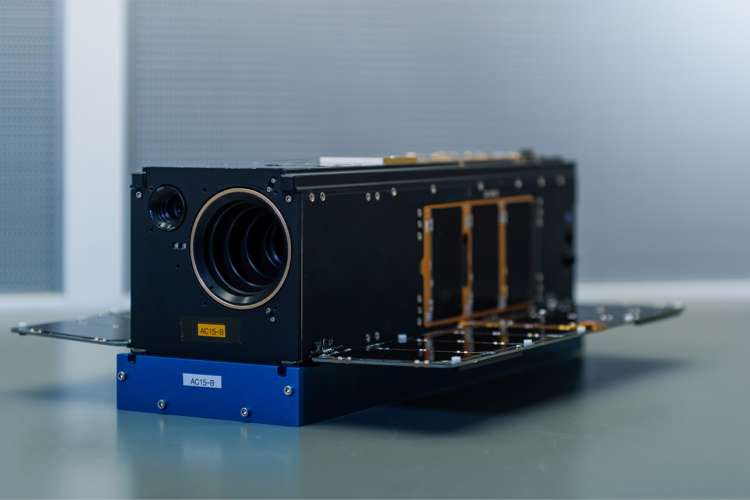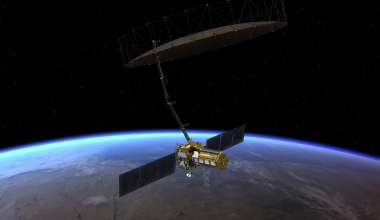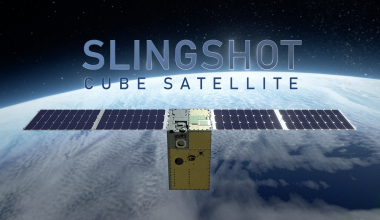Aerospace Rogue Alpha/Beta CubeSats Video
In mid-2018, The Aerospace Corporation engineers and scientists received a unique mission from the United States Air Force. Their challenge: Build and launch a pair of cube satellites on a tight budget and even tighter timeline of just 18 months.
In a world where the threats facing orbiting satellites proliferate with each passing year, the ability to field an agile response and quickly restore lost functionality is a critical, but still developing, capability.
Aerospace’s technical expertise put it in an unmatched position to chart a path forward, with staff utilizing commercial off-the-shelf parts in their race against the clock.
On Nov. 2, the team crossed the finish line with the successful launch of AeroCube-15, also known as the Aerospace Rogue Alpha/Beta CubeSats, launching aboard the Northrop Grumman Antares rocket.
“One of the keys to rapid reconstitution was to not stretch the technology limits too far with this one,” said Dr. Jeff Emdee, general manager in the Space Development Division. “It really wasn’t about testing unknown capabilities. It was about integrating off-the-shelf capabilities, testing it and assembling it in time for the launch date.”
The accelerated development timeline positioned the Aerospace CubeSats as pathfinders for studying rapid reconstitution, a key component of Agile Mission Assurance, which seeks to ensure mission capabilities even if on-orbit satellites are compromised.
The Aerospace Rogue Alpha/Beta CubeSats consist of a pair of identical 3-unit CubeSats designed, built and operated by Aerospace for the U.S. Air Force’s Space and Missile Systems Center. They will be stored onboard the Cygnus vehicle at the International Space Station for several months, with a planned deployment to low Earth orbit in early 2020.
The Aerospace CubeSats are planned for a 12-month mission. The mission experiment will consist of observing cloud backgrounds and ground targets to research the capabilities of commercially derived technology for space mission applications.
Developing the CubeSats on such a tight timeline — a typical satellite takes several years or more to design, build and launch — required Aerospace employees to work collaboratively to reshape their approach in pursuit of maximum efficiency and reduced complexity.
“The great thing about The Aerospace Corporation is we have world class experts in every aspect of satellite and sensor design. It’s really amazing what you can do when you put all that expertise together,” said Dr. Dee Pack, principal investigator and chief scientist for the Aerospace Rogue Alpha/Beta CubeSats mission. “The challenge was the project management discipline to pull experts from every part of the company and marshal them in an organized manner.”
Their work started with proven technologies developed by Aerospace, including the spacecraft bus and laser communications system, and the expertise developed at xLab through prior AeroCube builds.
Perhaps most challenging aspect was the shift in mindset required at a company that since its inception has focused on mission assurance and the highest level of reliability.
A focus was put on using as many commercial off-the-shelf parts as possible, yielding valuable lessons about the parts’ reliability and how long it takes to procure them. For instance, obtaining a focal plane array of the desired size would take at least a year, forcing Aerospace engineers to alter the design in favor of a smaller array.
In other cases, Aerospace had to further modify commercial parts or design their own when off-the-shelf parts, like a commercial infrared lens, didn’t meet performance needs. The various components then had to be tested and calibrated to meet the compressed timeline.
Perhaps most challenging aspect was the shift in mindset required at a company that since its inception has focused on mission assurance and the highest level of reliability.
“We had to make sure we stayed focused on the requirements that were important to the system,” said Dr. Sara Lampen, engineering specialist in the Visible and Infrared Systems Department and payload lead for the mission. “Making sure things are small, that they would be quick to manufacture — those all factored in to our decisions.”
The successful launch of AeroCube-15, along with the concurrent launch on Nov. 2 of AeroCube-14, will bring the total number of Aerospace CubeSats on orbit to 25. Aerospace was an early pioneer in the development of small satellites and continues to conduct pathfinding research in the field as one of the world’s leading private constellation operators.









